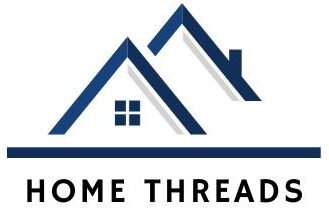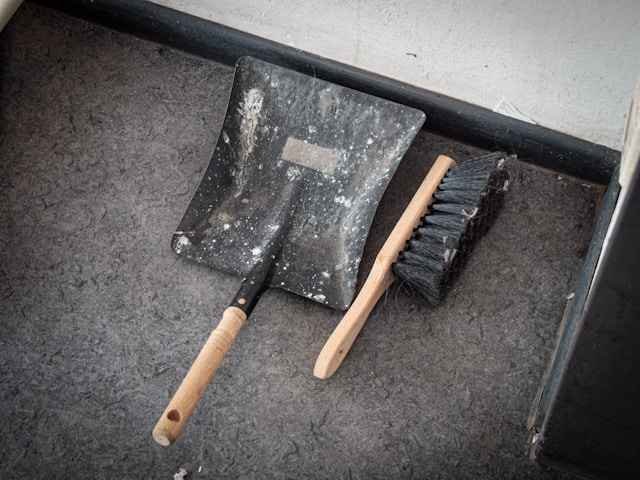Key Takeaways
- Mobile home moving requires specialized planning, permits, and experienced professionals to ensure a safe and efficient relocation.
- Understanding the moving process, from preparation to final setup, helps homeowners avoid costly mistakes and delays.
- Choosing a reputable moving company, budgeting accurately, and staying compliant with regulations are critical for a successful move.
- Advances in technology and eco-friendly options are shaping the future of mobile home moving in the United States.
Introduction: Ready to Move Your Mobile Home?
Have you ever wondered what’s really involved in mobile home moving? Picture this: your entire home, carefully lifted from its foundation, transported across highways, and set down in a brand new location—all without a scratch. This isn’t a job for amateurs! Mobile home moving is a detailed, regulated process that demands expertise, careful planning, and the right team of professionals.
In the United States, families move mobile homes for many reasons—from job changes and better schools to upgrading their living situation or responding to new regulations. No matter the reason, the benefits of professional planning and execution can’t be overstated. A successful mobile home moving experience protects your investment, minimizes stress, and helps you settle into your new location with confidence.
This comprehensive guide will walk you through everything you need to know about mobile home moving. From understanding what the process entails to choosing the right moving company, handling permits, estimating costs, and avoiding common pitfalls, you’ll find practical advice for every stage. Whether you’re a first-time mobile homeowner or a seasoned mover, this article will help you approach your relocation with clarity and peace of mind.
Understanding Mobile Home Moving
What Does Mobile Home Moving Mean?
Mobile home moving refers to the process of relocating a manufactured or modular home from one site to another. This isn’t simply a matter of towing a trailer; it’s a complex operation involving specialized equipment, careful coordination, and compliance with both federal and local laws.
Types of Mobile Homes That Can Be Moved
- Single-wide mobile homes: These are transported in one piece and are the easiest to move.
- Double-wide and multi-section homes: These must be separated into sections before transport, moved individually, and reassembled at the new location.
- Older mobile homes: Homes built before 1976 may need extra inspections or repairs to meet modern safety codes before they can be moved.
Why Do People Move Mobile Homes?
- Relocating for jobs, family, or better amenities
- Upgrading to a better community or park
- Avoiding redevelopment or park closures
- Compliance with new zoning or safety regulations
- Personal preference or lifestyle changes
Challenges in Relocating a Mobile Home
- Navigating state and local transportation laws
- Obtaining the necessary permits
- Ensuring the home’s structural integrity
- Dealing with weather and route obstacles
- Budgeting for hidden costs
Planning Your Mobile Home Move
Essential Steps to Prepare for a Move
- Inspect Your Home: Ensure the structure is sound and eligible for transport.
- Research Local Laws: Regulations vary by state and even by city; know what’s required.
- Secure All Permits: Moving without proper documentation can result in hefty fines and delays.
- Choose a Moving Company: Look for licensed, insured specialists in mobile home moving.
- Prepare the Destination Site: Make sure the new site is ready, with utilities and a solid foundation.
Securing Permits and Meeting Legal Requirements
- Transport permits: Required for moving oversized loads on public roads.
- Set-up permits: Needed to install your home at the new location.
- Zoning compliance: Your new site must be approved for mobile homes.
- HUD compliance: Especially for homes built after 1976.
Selecting the Right Mobile Home Moving Company
- Verify state licensing and insurance.
- Check for experience with your home type.
- Ask if they handle permits and coordination.
- Get references from previous customers.
- Compare quotes and services.
What Influences the Cost of Mobile Home Moving?
- Home size and weight
- Distance to new site
- Condition of the home
- Route complexity (bridges, narrow roads)
- Permits and insurance
- Disconnection and reconnection of utilities
- Set-up and installation at the new site
How to Plan Your Timeline
- Permits: Allow several days to weeks for approval.
- Scheduling: Book your mover well in advance, especially in peak seasons.
- Site Preparation: Coordinate with utility companies for timely hook-ups.
- Weather: Plan for possible weather delays.
Choosing a Mobile Home Moving Service
What to Look for in a Mover
- Proper licensing and insurance
- Experience with your specific home type
- Strong customer reviews
- Clear communication and transparent pricing
- Ability to handle both the move and installation
Important Questions to Ask
- What’s included in your quote?
- Who handles permits and inspections?
- How is my home protected during the move?
- What’s your experience with homes like mine?
- Can you provide proof of insurance?
Credentials and Insurance
- Movers should carry general liability, cargo, and workers’ compensation insurance.
- Ask for a Certificate of Insurance before signing any contract.
The Role of Customer Reviews
- Read testimonials and third-party reviews.
- Look for consistent feedback on reliability, professionalism, and problem-solving.
Comparing Costs and Getting Estimates
- Request itemized quotes from at least three companies.
- Beware of unusually low bids—these might skip important steps or lack proper coverage.
The Mobile Home Moving Process
Pre-Move Inspection and Assessment
- Movers assess your home for structural soundness.
- Required repairs are identified and completed before lifting.
Disconnecting and Securing Utilities
- Licensed professionals disconnect electricity, gas, water, and sewer.
- Remove skirting, decks, awnings, and outdoor attachments.
Lifting and Loading the Home
- Hydraulic jacks or cranes lift the home onto specialized trailers.
- The home is stabilized and secured for transport.
Planning the Route and Securing Permits
- The mover selects the safest, most efficient route.
- Permits for oversized loads, possible police escorts, and road closures are arranged.
Transporting the Home
- The home is driven to the new site, often accompanied by pilot cars for safety.
- The move is monitored for weather and road conditions.
Unloading and Preparing the New Site
- The home is carefully lowered onto the new foundation.
- Leveling and anchoring are performed to meet local codes.
Final Inspection and Setup
- Utilities are reconnected by licensed professionals.
- The home is inspected for any transport damage.
- Final adjustments and clean-up are completed.
Tips for a Successful Mobile Home Move
Prep Your Home for Transit
- Secure all loose items inside and outside.
- Protect windows and doors with padding or film.
- Remove fragile or valuable items during the move.
Safeguarding Your Investment
- Take photos before the move to document your home’s condition.
- Confirm insurance coverage for all stages of the move.
Communicate Clearly with Your Movers
- Establish a single point of contact.
- Confirm all details and schedules in writing.
- Stay updated on progress during the move.
Stay Compliant with Local Regulations
- Double-check permit approvals before moving day.
- Make sure the new site meets all zoning and building codes.
Post-Move Steps
- Inspect your home thoroughly after setup.
- Reconnect utilities and test all systems.
- Report any issues to your mover promptly.
Cost Breakdown of Mobile Home Moving
Freight and Transportation Fees
- Local moves for single-wides can range from $3,000 to $5,000.
- Double-wide moves or longer distances may cost $7,000 to $20,000 or more.
Permits and Legal Expenses
- State and local permits typically range from $100 to $1,000+.
- Some areas require inspections before and after the move.
Disconnection and Reconnection Costs
- Utility services can add $1,000 to $3,000.
- Set-up at the new site may cost $1,000 to $5,000.
Insurance
- Movers’ insurance protects against damage; costs vary based on home value.
Unexpected Expenses
- Repairs, route changes, or weather delays can add $500 to $2,000+.
Common Challenges and Solutions
Navigating Difficult Routes
- Professional movers plan routes to avoid low bridges, tight turns, or weight restrictions.
- In some cases, temporary road closures or police escorts are arranged.
Weather Considerations
- Moves may be rescheduled due to storms or extreme temperatures.
- Movers monitor forecasts and keep you informed.
Preventing Damage
- Proper packing and securing of the home is essential.
- Reputable movers use the right equipment and techniques to minimize risk.
Regulatory Hurdles
- Stay proactive about permits and inspections.
- Hire movers who are well-versed in local regulations.
Troubleshooting During the Move
- Establish clear communication channels.
- Address delays and issues promptly to keep your move on track.
Future Trends in Mobile Home Moving
Transportation Technology
- GPS tracking, AI route planning, and hydraulic equipment make moves safer and more efficient.
Enhanced Safety Standards
- New HUD and state codes drive up quality and safety for both homes and moving practices.
Eco-Friendly Moving
- Companies are adopting electric trucks, biodegradable materials, and carbon offset programs.
Regulatory Changes
- Stricter codes and zoning laws are shaping how and where mobile homes can be moved.
Conclusion
Mobile home moving is a highly specialized process that requires professional expertise, legal compliance, and detailed planning. By choosing a reputable mover, understanding each phase of the process, and budgeting for all possible costs, homeowners can enjoy a stress-free transition to their new location. As technology and eco-friendly practices continue to evolve, mobile home moving is becoming safer, more efficient, and more sustainable. If you’re considering relocating your mobile home, reach out to a trusted moving company to get started on your journey—your new home awaits!







